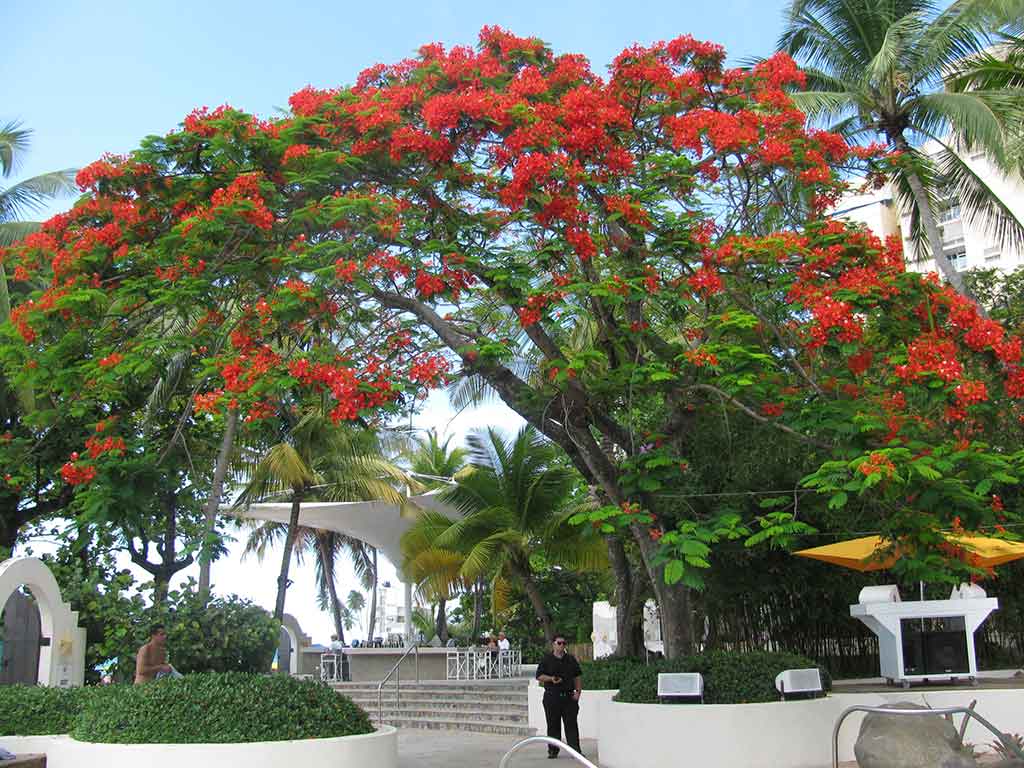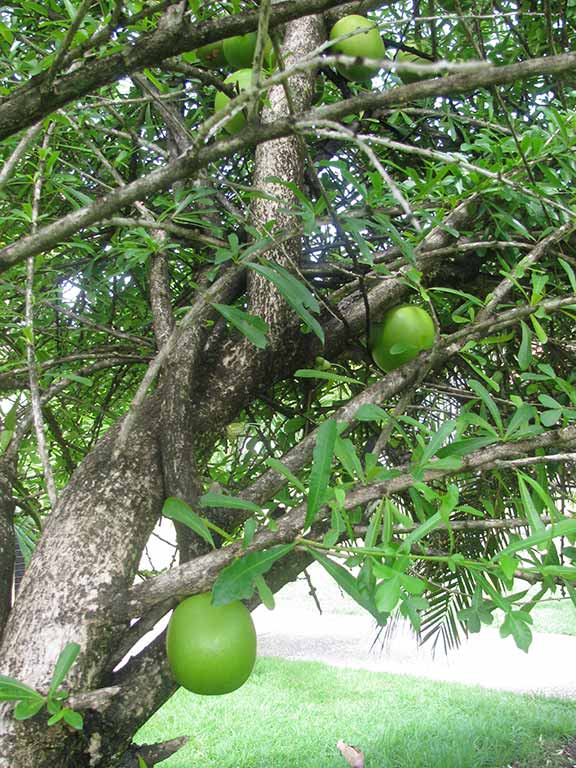The official tree of Puerto Rico is the ceiba, also called silk-cotton tree or kapok tree. Often the tallest tree in the forest, the ceiba attains heights of 150 feet and has a ridged columnar trunk and a massive umbrella-shaped canopy. Its far-reaching limbs often host aerial plants, such as moss and bromeliads.
Mangrove forests also help protect the coastal plains from violent storms, reduce erosion, and filter the ocean waters.The ceiba was important to the island’s indigenous Taínos because its thick trunks were perfect for carving into canoes. Its flowers are small and inconspicuous, but it produces a large ellipsoid fruit that, when split open, reveals an abundance of fluffy fibers, called kapok.Arguably Puerto Rico’s most beautiful tree, though, is the flamboyan, also known as royal poinciana. If you visit the island between June and August, you’re sure to notice the abundance of reddish-orange blooms that cover the umbrella-shaped canopy of the flamboyan. It is a gorgeous sight to behold. The tree is also distinguished by fernlike leaves and the long brown seedpods it produces.

The vibrant flamboyan tree. Photo © Suzanne Van Attn.
Probably the most plentiful and easily identifiable tree in Puerto Rico is the mighty palm, which grows throughout the island. There are actually many varieties of palm in Puerto Rico. Among them are the coconut palm, which has a smooth gray bark marked by ring scars from fallen fronds and which bears the beloved coconut in abundance; the royal palm, distinguished by its tall, thin, straight trunk, which grows to 25 feet and sports a crown of leaves that are silver on the underside; the Puerto Rican hat palm, featuring a fat tubular trunk and fan-shaped frond; and the sierra palm, which has a thin straight trunk and thick thatch.
Puerto Rico’s mangrove forests are found in swampy coastal areas throughout the island. Much of the island’s coast was once covered in mangrove, but a lot of it has been destroyed to make way for commercial development. Fortunately efforts are under way to preserve many of the island’s last remaining mangrove forests in parks in Piñones, Boquerón, Fajardo, Vieques, and elsewhere.
The mangrove tree is a unique plant. For one thing, it is able to grow along the ocean’s shallow edges, absorbing, processing, and secreting salt from the water. But what’s truly amazing about the mangrove, and what makes it so vital to marine life, is its adaptive root system. Because the trees grow in thick, oxygen-deprived mud, they sprout aerial roots to absorb oxygen from the air and nutrients from the surface of the water. The aerial roots take many different forms, including thousands of tiny pencil-shaped roots sticking up from shallow waters; big knee-shaped roots that emerge from the ground and loop back down; and roots that sprout from branches.
Between its complex tangle of roots and its low-lying compact canopy, the mangrove forest plays several important roles in the environment, primarily by providing habitat to local wildlife. Its branches are a haven to nesting birds, and its underwater root systems protect crabs, snails, crustaceans, and small fish from predators. Mangrove forests also help protect the coastal plains from violent storms, reduce erosion, and filter the ocean waters. And finally, mangrove forests actually build land by providing nooks and crannies within their root systems that capture soil, aerate it, and create conditions where other plants can grow.
Puerto Rico is rich in plants that have edible, medicinal, or other practical uses. For the Taíno Indians, the island’s forests served as their pharmacy and grocery store.

Gourds produced by the calabash tree were used for storage by the Taíno. Photo © Suzanne Van Atten.
The mamey is prized not only for the delicious fruit it bears but also for its fragrant flowers and lovely appearance. Resembling a Southern magnolia, the mamey grows to 60 feet high and features a short stout trunk and dense foliage with long, glossy, leathery dark-green leaves. The flowers feature 4-6 white petals and have a lovely fragrance. The fruit is brown and leathery on the outside, and inside can be sweet and tender or crisp and sour, depending on the variety. Another popular tree that bears edible fruit is the mango. The ubiquitous leafy tree grows in forests, backyards, and alongside roadways, and in the summer each tree bears what appear to be hundreds of mangoes. When ripe, the fruit is covered with a thick yellow and brown skin, but inside is a soft succulent fruit similar to a peach. You’ll often see locals on the side of the road selling bags of them out of their trucks.
The curious calabash tree served an entirely different purpose in Taíno culture. Its greatest value was in the large, round, gourd-like fruit that sprouts directly from the tree’s trunk. After the fruit was cleansed of its pulp, the remaining shell was dried and used as a bowl for food preparation and storage. Sometimes the bowls were decorated with elaborate carvings etched into the sides before the shell dried. Carved calabash bowls are popular souvenir items today.
Excerpted from the Fourth Edition of Moon Puerto Rico.